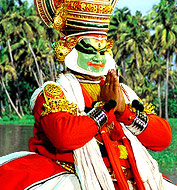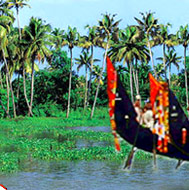The Parambikulam Wildlife Sanctuary, established in 1973 and spread over an area of 285 sq km on the Western Ghats, is located in a valley between the Anamalai Hills of Tamil Nadu and the Nelliyampathy Hills of Kerala. The altitude of the sanctuary ranges from 300 m to 1438 m with major peaks of the region being Karimala (1438 m), Pandaravarai (1290 m), Vengoli Malai (1120 m), and Puliyarapadam (1010 m). Apart from being a natural reserve, the sanctuary is home to three man-made reservoirs also, namely, Parambikulam, Thunacadavu, and Peruvaripallam. The sanctuary itself is the most protected ecological piece of Anamalai subunit of Western Ghats, surrounded by the protected sanctuaries of Kerala and Tamil Nadu, on all sides.
While strolling through the sanctuary, you can catch a glimpse of the rare peninsular flora and fauna found in these parts of India. The remarkable flora comprises of a wide variety of teak, neem, sandalwood, and rosewood trees spread across the region. A total of 1408 species of flowering plants are known to exist here. According to statistics, 39 species of mammals, 16 of amphibians, 268 of birds, 61 of reptiles, 47 of fish, 1049 of insects, and 124 species of butterflies have been reported to thrive in the sanctuary. Some diverse animal life that are sighted here include Nilgiri langurs, bonnet macaques, Bengal tigers, lion-tailed macaques, spectacled cobras, Malabar pit vipers, kraits, Cochin cane turtles, darters, black eagles, and little cormorants. The jungles of Parambikulam also provide shelter to many tribes, like the Malayars, the Kadas, and the Muthuvans.
The sanctuary exhibits a wet tropical climate and receives moderate rainfall when compared to few other sanctuaries of Kerala, from 1400 mm to 2300 mm. Both northwest monsoon and northeast monsoon shower the sanctuary. Even pre-monsoon showers are received during the months of April and May. While July remains the wettest month of the year, January takes the title of the driest. The temperature in the sanctuary varies between 15 0C to 32 0C. March remains the hottest month of the year with an average temperature of 25 0C and January the coldest month with an average temperature of 21 0C. However, as the terrain rises, the temperature dips down.
Besides the sanctuary, there are many other attractions at Parambikulam. These include boat cruises in the Parambikulam reservoir and trekking (with the permission of the concerned authorities). Kannimara, one of the oldest and largest teak tree in the world, Thuvaiar Waterfalls, modern and interactive wildlife centre, medicinal plants demo garden, and interpretation centre are some other interesting attractions offered here besides wildlife sightseeing. Parambikulam is well connected by road from Pollachi in Tamil Nadu. The nearest railhead is Palakkad (100 km) while the closest airport is in Coimbatore, Tamil Nadu (55 km from Palakkad). The visiting hours are from 7 am to 6 pm. Accommodation facilities are available inside the sanctuary.
The Parambikulam wildlife sanctuary in Kerala is
home to a large variety of flora and fauna.
Holidays in Kerala : Wildlife in Kerala : Parambikulam Wildlife Sanctuary












